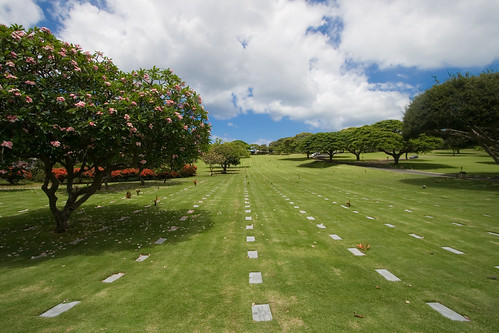When we were in Hawaii this summer we visited the National Memorial Cemetery of the Pacific in Punchbowl Crater overlooking Honolulu. I was struck by the scale of the cemetery of World War II soldiers, including the “Courts of the Missing” dedicated to the 28,000 missing in action. Despite the number of graves, the setting is unmistakably beautiful. But there is little beauty in E.B. Sledge’s account of being a Marine fighting in the Pacific campaign. (His book was quoted in Ken Burns’ The War and will be the basis for an HBO series called The Pacific.) In With the Old Breed: At Peleliu and Okinawa Sledge matter-of-factly describes the life of a soldier on the front lines with Company K, 3rd Battalion, 5th Marines. Beyond the terror of shellings much description is given to the daily pains of too little sleep, extreme heat, terrible food, the horrible odor of the battlefield, or typical hardships,
During a period of about fourteen or fifteen days, as near as I can calculate the time, my feet and those of my buddies were soaking wet, and our boondockers were caked with sticky mud. Being up on the line and frequently shelled prevented a man from taking off his boondockers to put on a pair of dry socks...My feet were sore, and it hurt to walk or run.
“Sledgehammer” remains unsentimental in his memoir. Buddies returning to the States were often disillusioned and felt alienated from civilians “who griped because America wasn’t perfect, or their coffee wasn’t hot enough, or they had to stand in line and wait for a train or bus.” V-E Day brought little joy to those still in the “meatgrinder” on Okinawa that claimed more than 7,000 killed and many more wounded or “battle fatigued”. His perspective stays firmly focused at ground level, on the lives of those truly waging the war.
